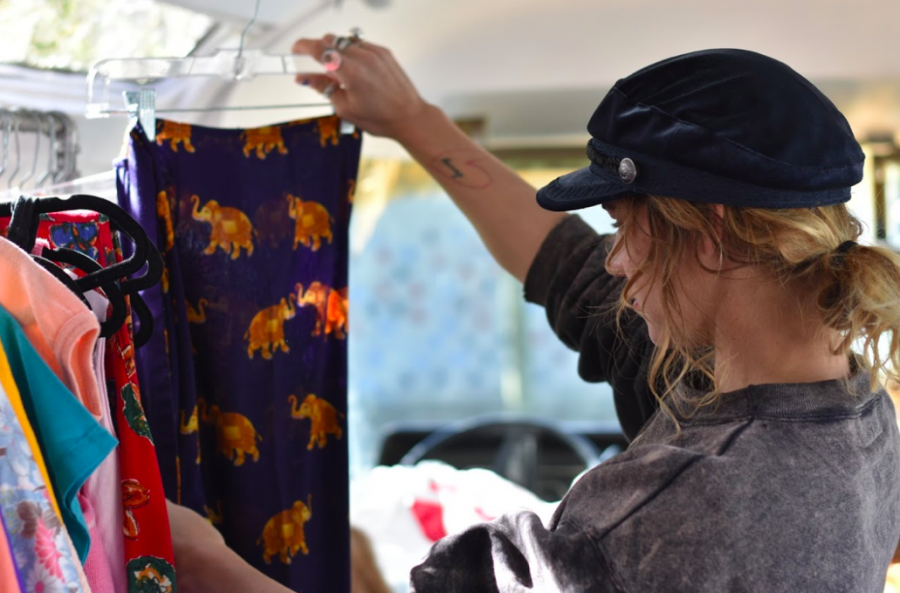Thrifting
February 1, 2019
Despite the efforts made by sustainable brands, they leave behind many who cannot afford the high prices — especially youth and young adults. What is left for those who cannot afford these products is another type of sustainable consumerism.
Thrifting.
The attitude towards second-hand has shifted in the past decade. Many teens are using their free time to thrift or shop vintage, according to Barron and local business owner Amy Rose. This gives older pieces new life, limits financial support for fast fashion and avoids the spreading of negative waste.
Sophomore Abby Sullivan has a tradition with her friends on the weekends to go to the Six Mile Goodwill, split up and shop for each other. They find “gems” while sifting through the many racks of donated items and make the activity almost like a gift giving “game” for their friends, Sullivan said.
“When I buy things from H&M and fast fashion, I always feel bad because there is someone who suffered,” Sullivan said. “But for the Goodwill, it is a nice experience because originally someone bought it then gave it to Goodwill. And it’s not harming anyone, it’s not making new clothes.”
Thrifting has grown in popularity among teens, with even personalities on social media capitalizing off thrifting and reselling clothing.
“That is one thing I love about our generation is the fact that we are not embarrassed to wear someone else’s clothes or clothes that are not cheap or clothes that are from a different time period. I think that teens are really driving that force,” Barron said.
Rose, local business owner of Red Rose Vintage, uses her appreciation of sustainability to sell vintage clothing from the 1980s and ‘90s out of her recycled ‘76 Airstream RV. Rose and her buyer clean out houses, source from flea markets, yard sales and estate sales to obtain her extremely specific, curated lines of clothing that all follow the same “vibe.”
Senior Amelia Walker shops at Red Rose Vintage.
“It’s also fun to walk around and search for really unique pieces — shirts and jackets — that you just couldn’t see elsewhere because they’re so eclectic,” Walker said. “It is local, so I know that I’m helping out the community and also environmentally, it makes a lot of sense to reuse and resell old clothes for new purposes, so people can continue to enjoy them down the road.”
Her clothing averages from $20-$24, more expensive than thrifting but less than sustainable brands.
“Vintage is so popular these days… you can’t find anything for $20 bucks these days, and if you do, it is Forever 21, and you’re going to wash it and it’s going to fall apart,” Rose said. “So many pieces end up in the landfill at the end of the day, so if I can save those and give them new life…, I think it is great.”
Not only does she recycle fabrics and clothing, Rose recycles her old price tags, uses recycled paper bags and operates out of a recycled vehicle.
“I think if designers used recycled fabric, like what a difference that would make. And the fabric was so much better back in the day anyway,” Rose said. “You are going to have it for your entire life.”
